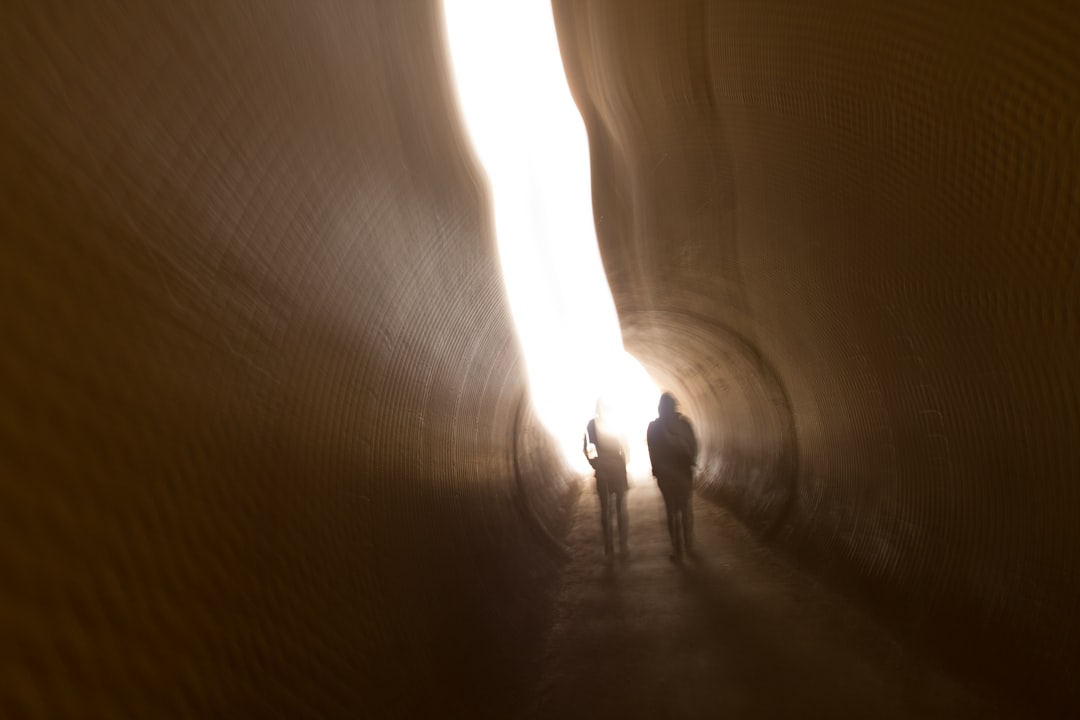The Drake Passage, a body of water situated between the southern tip of South America and Antarctica, is renowned for its tumultuous seas and breathtaking vistas. This narrow stretch of ocean, measuring approximately 800 kilometers (500 miles) wide, serves as a critical conduit for maritime traffic between the Atlantic and Pacific Oceans. Its unique geographical position not only makes it a vital route for shipping but also a focal point for scientific research and exploration.
The passage is often characterized by its unpredictable weather patterns and challenging navigation conditions, which have earned it a reputation as one of the most formidable maritime routes in the world. The allure of the Drake Passage extends beyond its navigational challenges; it is also a gateway to some of the planet’s most pristine and remote environments. Adventurers and researchers alike are drawn to its icy waters, where the convergence of ocean currents creates a rich ecosystem teeming with wildlife.
The passage is not merely a geographical feature; it embodies the spirit of exploration and the quest for knowledge about our planet’s climate and biodiversity. As such, the Drake Passage stands as a testament to the enduring human fascination with the natural world and the challenges it presents.
Key Takeaways
- The Drake Passage is a body of water between South America’s Cape Horn and the South Shetland Islands of Antarctica, known for its challenging and unpredictable conditions.
- The Drake Passage has a rich historical significance as the route taken by famous explorers such as Sir Francis Drake and Charles Darwin, and has been a key passage for maritime trade and exploration.
- The weather and climate patterns in the Drake Passage are characterized by strong winds, rough seas, and rapidly changing conditions, making it one of the most challenging maritime environments in the world.
- The Drake Passage is home to a diverse range of wildlife, including penguins, seals, and various species of seabirds, as well as stunning natural attractions such as icebergs and glaciers.
- Navigating the Drake Passage presents numerous challenges and dangers, including extreme weather, icebergs, and strong currents, requiring careful planning and seamanship skills.
- Tips for preparing for a journey through the Drake Passage include packing appropriate clothing, seasickness medication, and being mentally prepared for the potential rough conditions.
- Navigation techniques and strategies for the Drake Passage involve careful route planning, monitoring weather forecasts, and maintaining constant communication with other vessels and support teams.
- Safety precautions and emergency protocols for the Drake Passage include regular safety drills, having appropriate safety equipment on board, and being prepared for potential medical emergencies or vessel damage.
- The Drake Passage holds cultural and scientific significance as a gateway to Antarctica and a hub for research expeditions, contributing to our understanding of climate change and marine ecosystems.
- Personal accounts and experiences of navigating the Drake Passage often highlight the sense of adventure and accomplishment in overcoming its challenges, as well as the awe-inspiring beauty of the Antarctic landscape.
- In conclusion, the allure and adventure of the Drake Passage lie in its rich history, extreme conditions, and unique natural beauty, making it a truly unforgettable experience for those who brave its waters.
Historical significance of the Drake Passage
The historical significance of the Drake Passage cannot be overstated. Named after Sir Francis Drake, the English sea captain who navigated these waters in the late 16th century, the passage has long been a site of exploration and adventure. Drake’s journey marked one of the earliest European encounters with the southern seas, paving the way for future expeditions to Antarctica and beyond.
His voyages not only expanded geographical knowledge but also ignited interest in the rich resources that lay in these uncharted territories. Throughout history, the Drake Passage has served as a critical route for explorers, scientists, and traders. In the 19th century, whalers and sealers flocked to its icy waters, drawn by the promise of lucrative catches.
The passage became a vital link for those seeking to exploit the natural resources of Antarctica, leading to significant ecological changes in the region. Moreover, during the Age of Exploration, numerous expeditions sought to navigate its treacherous waters, contributing to our understanding of oceanography and meteorology. The legacy of these early navigators continues to influence modern maritime practices and scientific research in the area.
Weather and climate patterns in the Drake Passage

The weather and climate patterns in the Drake Passage are notoriously unpredictable, characterized by rapid changes that can occur within hours. The convergence of cold Antarctic waters with warmer currents from the north creates a dynamic environment where storms can develop suddenly and with little warning. Sailors navigating these waters must be prepared for fierce winds, towering waves, and sudden temperature drops that can challenge even the most experienced mariners.
The passage is often described as having some of the roughest seas on Earth, making it both a daunting challenge and an exhilarating experience for those who dare to traverse it. Seasonal variations also play a significant role in shaping the climate of the Drake Passage. During the summer months, from November to March, conditions tend to be milder, attracting more vessels and tourists eager to explore Antarctica.
However, even during this period, storms can arise unexpectedly, reminding travelers of nature’s power. In contrast, winter months bring harsher conditions, with freezing temperatures and increased ice coverage posing additional challenges for navigation. Understanding these weather patterns is crucial for anyone planning a journey through this formidable passage.
Wildlife and natural attractions in the Drake Passage
| Wildlife and Natural Attractions in the Drake Passage |
|---|
| 1. Penguins |
| 2. Whales |
| 3. Seals |
| 4. Albatrosses |
| 5. Icebergs |
| 6. Glaciers |
The Drake Passage is not only known for its challenging navigation but also for its rich biodiversity and stunning natural attractions. The waters are home to an array of marine life, including various species of whales, seals, and seabirds. Humpback whales, orcas, and minke whales are frequently spotted during voyages through the passage, captivating travelers with their majestic presence.
Additionally, seabirds such as albatrosses and petrels glide gracefully above the waves, adding to the spectacle of this unique ecosystem. Beyond its marine life, the Drake Passage offers breathtaking landscapes that draw adventurers from around the globe. Icebergs drift serenely through its waters, while towering glaciers loom on the horizon, creating a dramatic backdrop for exploration.
The stark beauty of this environment serves as a reminder of nature’s raw power and fragility. For many travelers, witnessing these natural wonders firsthand is a transformative experience that deepens their appreciation for the planet’s diverse ecosystems.
Challenges and dangers of navigating the Drake Passage
Navigating the Drake Passage presents numerous challenges and dangers that can test even seasoned sailors. The unpredictable weather patterns are perhaps the most significant threat; storms can arise suddenly, creating treacherous conditions that can lead to capsizing or collisions. The strong currents and shifting tides further complicate navigation, requiring constant vigilance and adaptability from those at the helm.
Additionally, icebergs pose a constant hazard, particularly during certain times of the year when they are more prevalent. The psychological toll of traversing such a formidable passage should not be underestimated either. The isolation and harsh conditions can lead to feelings of anxiety or fear among crew members and passengers alike.
It is essential for those embarking on this journey to be mentally prepared for the challenges they may face. Understanding these dangers is crucial for ensuring safety and successfully navigating this iconic maritime route.
Tips for preparing for a journey through the Drake Passage

Preparation is key for anyone planning to navigate the Drake Passage. First and foremost, travelers should invest in high-quality gear designed for extreme weather conditions. Waterproof clothing, sturdy footwear, and insulated layers are essential for staying warm and dry during unpredictable weather changes.
Additionally, travelers should consider bringing seasickness medication or remedies to combat potential nausea caused by rough seas. It is also advisable to familiarize oneself with basic maritime safety protocols before embarking on this journey. Understanding how to use life jackets, emergency beacons, and communication devices can make a significant difference in ensuring safety at sea.
Furthermore, engaging with experienced crew members or guides can provide valuable insights into navigating the passage effectively while enhancing overall enjoyment of the experience.
Navigation techniques and strategies for the Drake Passage
Successful navigation through the Drake Passage requires a combination of skillful seamanship and strategic planning. Mariners must be adept at reading weather patterns and understanding ocean currents to chart a safe course through these challenging waters. Utilizing advanced navigation technology such as GPS systems can aid in pinpointing locations accurately while providing real-time updates on changing conditions.
Additionally, maintaining open communication with other vessels in the area can enhance safety during transit. Sharing information about weather conditions or potential hazards can help create a collaborative environment among sailors navigating this formidable passage.
Safety precautions and emergency protocols for the Drake Passage
Safety precautions are paramount when navigating the Drake Passage due to its inherent dangers. Mariners should conduct thorough safety briefings before departure, ensuring that all crew members are aware of emergency protocols and procedures. This includes familiarizing everyone with life-saving equipment such as lifeboats, flares, and first aid kits.
In addition to pre-departure preparations, maintaining vigilance throughout the journey is crucial. Regularly monitoring weather updates and being prepared to alter course if conditions worsen can prevent dangerous situations from arising. Establishing clear communication channels among crew members ensures that everyone remains informed about potential hazards or changes in plans during transit.
Cultural and scientific significance of the Drake Passage
The cultural significance of the Drake Passage extends beyond its historical role as a route for explorers; it has also become a symbol of human resilience in facing nature’s challenges. The stories of those who have navigated these waters—whether they were seeking new lands or conducting scientific research—reflect humanity’s enduring spirit of exploration and discovery. From a scientific perspective, the Drake Passage plays a vital role in understanding global climate patterns and oceanography.
Researchers study its unique currents and ecosystems to gain insights into climate change’s impact on marine life and global weather systems. The passage serves as a natural laboratory for scientists seeking to unravel complex environmental questions while highlighting humanity’s responsibility to protect these fragile ecosystems.
Personal accounts and experiences of navigating the Drake Passage
Personal accounts from those who have navigated the Drake Passage often reveal a mix of awe and trepidation. Many travelers recount their experiences with rough seas that tested their limits while simultaneously offering breathtaking views of icebergs and wildlife encounters that left lasting impressions. These narratives often highlight moments of camaraderie among crew members as they faced challenges together, forging bonds that transcended their individual experiences.
For some adventurers, crossing the Drake Passage represents a rite of passage—a test of endurance that ultimately leads to profound personal growth.
The allure and adventure of the Drake Passage
In conclusion, the Drake Passage stands as an emblematic representation of adventure and exploration on our planet. Its historical significance as a route for explorers has shaped our understanding of geography while inspiring generations to seek out new frontiers. The unpredictable weather patterns present both challenges and opportunities for those daring enough to navigate its waters.
Moreover, the rich biodiversity found within this passage serves as a reminder of nature’s beauty and fragility—a call to protect these ecosystems for future generations. As adventurers continue to traverse this iconic maritime route, they carry with them stories that reflect humanity’s enduring spirit in facing nature’s challenges head-on. Ultimately, whether viewed through historical lenses or personal narratives, the allure of the Drake Passage remains undeniable—a testament to both human curiosity and nature’s grandeur.
The Drake Passage, a notorious stretch of water between the southern tip of South America and Antarctica, is often considered one of the most treacherous sea routes in the world. For those interested in learning more about the challenges and adventures associated with navigating this formidable passage, a related article can be found on MyGeoQuest. This article delves into the geographical and historical significance of the Drake Passage, offering insights into why it remains a critical route for explorers and researchers alike. To explore this topic further, you can read the article by visiting this link.
WATCH NOW! Drake Passage: Earth’s Deadliest Waters Revealed
FAQs
What is the Drake Passage?
The Drake Passage is the body of water between the southern tip of South America and the northern tip of the Antarctic Peninsula. It is known for its rough seas and challenging sailing conditions.
Why is the Drake Passage significant for ships?
The Drake Passage is significant for ships because it is the shortest and most direct route between the Atlantic and Pacific Oceans. However, it is also known for its unpredictable and often severe weather conditions, making it a challenging passage for ships to navigate.
What type of ships navigate the Drake Passage?
A variety of ships navigate the Drake Passage, including research vessels, expedition cruise ships, and cargo vessels. These ships are specially equipped to handle the rough seas and extreme weather conditions of the passage.
What are the weather conditions like in the Drake Passage?
The weather conditions in the Drake Passage can be extreme, with strong winds, high waves, and rapidly changing weather patterns. Storms are common in the area, making it one of the most challenging maritime routes in the world.
Are there any safety concerns for ships in the Drake Passage?
Safety concerns for ships in the Drake Passage include the risk of encountering severe weather, icebergs, and rough seas. Ships must be well-equipped and have experienced crew members to navigate the passage safely.
What is the best time of year to navigate the Drake Passage?
The best time of year to navigate the Drake Passage is during the austral summer, from November to March, when the weather conditions are relatively milder. However, even during this time, the passage can still experience challenging weather.
